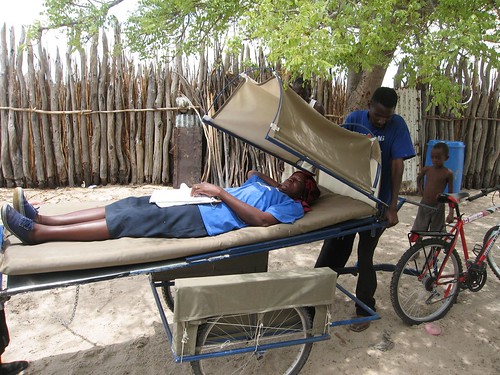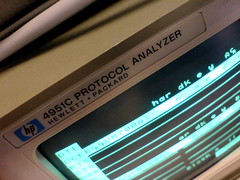 In my previous post on why logistics seems to be so prone to “herding cats” problem (thanks, Laura Walker Hudson!), I suggested five reasons:
In my previous post on why logistics seems to be so prone to “herding cats” problem (thanks, Laura Walker Hudson!), I suggested five reasons:
- The complexities of logistics are “deep” complexities, and are not readily apparent.
- Daily logistics experiences are not always applicable to large-scale logistics.
- Our evidence base is sketchy, which has a ‘halo’ effect on all logistics activities.
- There are hardly any aid logisticians with a recognised advanced degree in the field.
- Aid logisticians are not the biggest fans of systems or administration themselves.
So what to do about his?
1. Work on the evidence
This is easier said than done. However, we will need something more than our gut feelings and personal experience to be able convince our colleagues. Other areas in aid routinely publish about lessons learned — why don’t we do so in logistics?
- If you have seen (or developed) a particularly successful technique or method, or seen a received one wreak havoc in a particular setting, don’t keep it to yourself: write an article for an appropriate journal.
- Think how you can incorporate research in your daily practice and do so. Most aid organisations, and defintely most health organisations are open to facilitate research as long as it does not inconvenience their programs too much. Health and humanitarian disciplines routinely do research within programmes, but logistics rarely does.
2. Explain, explain, explain — and learn
Too often, we do not explain why we want to do certain things a certain way: why is it necessary to fill in that request form, why can’t we just go to the pharmacy and take what is needed, why do we need to make consumption forecasts? Be didactic; and be proactive about — don’t wait for your colleagues to ask, because they will only do so when their irritation level is already high. And if you feel that you cannot explain, rethink — perhaps we are on the wrong track.
This holds true the tactical planning level as well: why do you elect to go for six-monthly order cycles and not three-monthly ones? Why do you select these suppliers and not those? Why do you procure your drugs in Europe and not locally? Include in your explanations why logistical solutions that work at the level of one patient, one time, will not work at the level of a large-scale intervention.
Make sure that everybody understands (or at least has a chance to understand) what you are doing and why, and you will see that it will suddenly is much easier to implement your systems. You will also get much better feedback — and who knows, that feedback might lead you to reconsider your plans and improve them beyond recognition.
3. Get a recognised qualification
Get that master’s degree in aid or health logistics, and see how much more recognition you suddenly get (and how much deeper your understanding of what you do will be).
I am working on my second master’s degree now (in public health, specialising in health logistics for develing countries), but my first one was only sidewise related to aid/health logistics. Already I notice that people take more account of what I am saying, just because they feel that I somehow ‘earned’ that by studying the field. Utter nonsense, of course, but it is how the game plays — and you’d better play along if you want to have the impact you know you can.
Working on my MPH has also given me an opportunity to better integrate my knowledge. It haven’t yet learnt much that was completely new to me, but I am now better able to put things in their context, and to see links between seemingly disparate pieces of knowledge that I did not see before. It also enables me argue more convincingly (not necessarily better, but definitely more convincingly) because it has given me better knowledge of the language of health and health professionals. And finally, it has enabled me to expand my network in global health, which means that I know who to call next time I have a problem that I don’t have a good solution for, or when I think that I need specialist input for.
Get that qualification — it’s worth it.
4. Don’t undercut yourself
When the unexpected happens, don’t throw your logistics systems overboard and get into emergency mode. First think how you can accommodate the issue within your existing systems. By giving the right example, you can show the importance of those systems and that they are not just impediments to getting our work done.
Don’t change systems without in-depth understanding. Many logistics managers in aid, especially in emergency aid, have very clear ideas about how things should be run and do not hesitate to change things in the first couple of weeks (or sometimes even days) after they have arrived. However, your predecessor probably was not a fool either, and would have had reasons to implement the systems the way they did — based on what they knew after having worked for some time in that particular setting. Don’t change systems before you have been in the programme at least six weeks to two months — and for developmental programmes even longer. Changing things too fast, too soon, will only serve to undercut yourself and future logisticians.
And finally: follow the systems yourself. Nothing will undercut your authority as quickly as a ‘do what I say, not as I do’ attitude.
(Image by Todd Lappin)

Continue Reading 2 comments }Aid and aid work, Logistics, Public health













